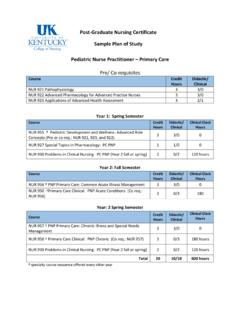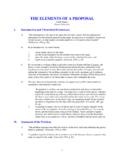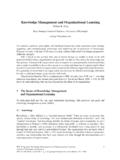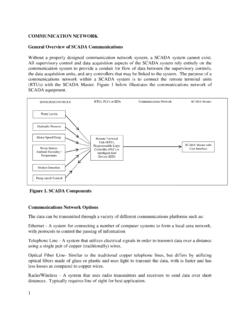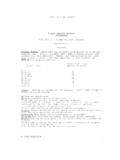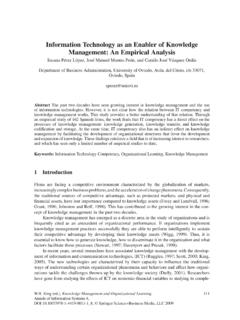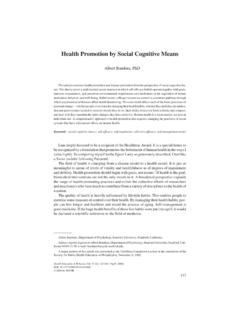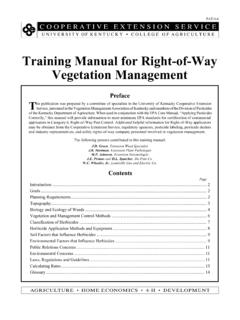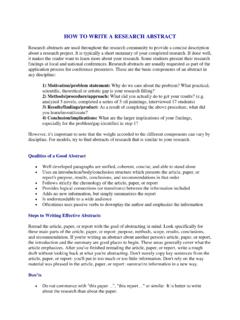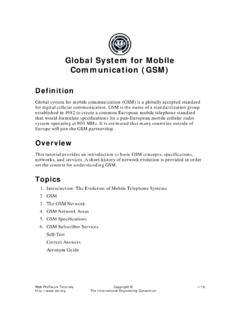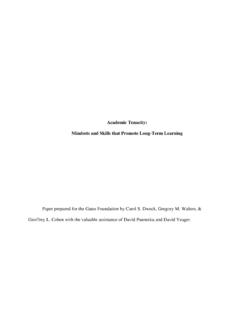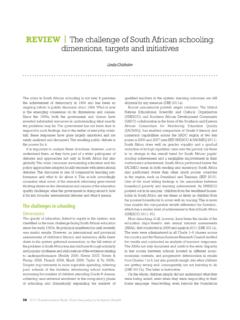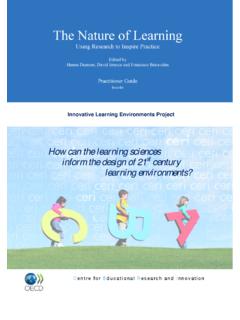Transcription of Teacher Efficacy: Its Meaning and Measure
1 1 Teacher efficacy : Its Meaning and MeasureMegan Tschannen-Moran, Anita Woolfolk Hoy, and Wayne K. Hoy The Ohio State UniversityCite as: Tschannen-Moran, M., Woolfolk Hoy, A. & Hoy, W. K. (1998). Teacher efficacy : Its meaningand Measure . Review of Educational Research, 68, 202 - : This article was published in the Review of Educational Research (RER), andcopyright is retained by the American Educational Research Association, whichpublishes RER. Academic publishers allow authors to post material on web serverswithout permission, but users are asked not to copy or repost the material withoutpermission from the appropriate publisher.
2 2 Teacher efficacy : Its Meaning and MeasureMegan Tschannen-Moran, Anita Woolfolk Hoy, and Wayne K. Hoy The theoretical and empirical underpinnings of Teacher efficacy are examined to bring coherenceto the construct and its measurement. First, we explore the correlates of Teacher efficacy revealedusing various instruments and search for patterns that suggest a better understanding of theconstruct. Next, we introduce a model of Teacher efficacy that reconciles two competingconceptual strands found in the literature.
3 Then we examine implications of the research onteacher efficacy for Teacher preparation and suggest strategies for improving the efficacy ofinservice teachers. Finally, we propose new directions for research in light of the years ago researchers from the Rand Corporation added two items to an already extensivequestionnaire (Armor et al., 1976). It may have been simply a hunch or a whim, but they got results,powerful results, and the concept of Teacher efficacy was born.
4 Teacher efficacy has been defined as theextent to which the Teacher believes he or she has the capacity to affect student performance (Berman, etal., 1977, p. 137), or as teachers belief or conviction that they can influence how well students learn,even those who may be difficult or unmotivated (Guskey & Passaro, 1994, p. 4). This appealing idea,that teachers beliefs about their own capacities as teachers somehow matter, enjoyed a celebratedchildhood, producing compelling findings in almost every study, but it has also struggled through thedifficult, if inevitable, identity crisis of adolescence.
5 What is Teacher efficacy and why does it continue toproduce such compelling results? How is it best measured? Twenty-one years after its birth, as teacherefficacy stands on the verge of maturity, it is time to assess where we have been and to offer tentativeanswers to some of the questions this research has generated. With the work of Rotter (1966) as a theoretical base, Teacher efficacy was first conceived by theRand researchers as the extent to which teachers believed that they could control the reinforcement oftheir actions, that is, whether control of reinforcement lay within themselves or in the motivation and performance were assumed to be significant reinforcers for teaching , teachers with a high level of efficacy believed that they could control, or at least strongly influence.
6 Student achievement and motivation. A second conceptual strand of theory and research grew out of thework of Bandura (1977), identifying Teacher efficacy as a type of self- efficacy --a cognitive process inwhich people construct beliefs about their capacity to perform at a given level of attainment. These beliefsinfluence how much effort people put forth, how long they will persist in the face of obstacles, theirresilience in dealing with failures, and how much stress or depression they experience in coping withdemanding situations (Bandura, 1997).
7 The existence of these two separate but intertwined conceptualstrands has contributed to a lack of clarity about the nature of Teacher efficacy . A number of unresolved issues continue to perplex researchers working in the area of teacherefficacy. Is Teacher efficacy a trait that can be captured by a Teacher efficacy instrument or is it specific togiven contexts? Are the traditional assessments of Teacher efficacy adequate to the task? Does the conceptneed to be refined or expanded to capture more aspects of teachers self- efficacy ?
8 What is the bestinterpretation of the two factors that consistently emerge on quantitative measures of efficacy ? Whatcontributes to the development of strong, positive Teacher efficacy ? How malleable is a sense of efficacyonce it is established? Does the stability of efficacy change over career stages or across contexts? In whatways does a Teacher s sense of efficacy influence teaching behavior? How do teachers efficacy beliefsinfluence student beliefs and achievement? 3 The purpose of this paper is to examine the conceptual underpinnings of Teacher efficacy and thetools used to Measure it with an eye toward clarifying the construct and improving its we did not research every topic related to teachers beliefs about their competence orconfidence, we did identify and review virtually all sources dated between 1974 and 1997 that used theterm Teacher efficacy .
9 For the most part, only articles, conference papers, and books within the twobroad theoretical frameworks sketched above are included. These resources represent teachers at differentstages in their careers (preservice, novice and inservice), from various school levels (elementary, middle,and secondary), and in a variety of contexts (urban, suburban, and rural). In addition, the work reportedhere uses a range of research methodologies, but the overwhelming majority of extant studies employedquantitative assessment.
10 Because we focus on the two dominant theoretical frames that have guided research on this topic,our view of efficacy will be through a psychological lens; both Rotter s and Bandura s work are in thattradition. In addition, the bulk of the research that uses the term " Teacher efficacy has connections tothese psychological frames. Because the work has grown within this tradition and also because thedominant modes of investigation have been quantitative, our exploration of Teacher efficacy will be deepand thorough in some ways, but narrow in others.
